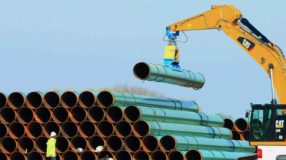Amy Andryszak, president and CEO of the Interstate Natural Gas Association of America, issued the following statement in response to FERC’s new certificate policy statement:
“Natural gas and related infrastructure are foundational to our energy future, climate aspirations and national security. Today’s two new policy statements issued by FERC’s majority, which replace the bi-partisan and unanimous decision reached by the Commission in 1999, call into question the durability of FERC’s certificate policy review framework and add additional uncertainty to the already complex natural gas pipeline permitting process.
“Today’s Interim Greenhouse Gas Emissions Policy Statement does not add clarity to the certification process, but instead creates more questions. In the interim GHG policy statement, the majority established a seemingly arbitrary number to determine the significance of incremental GHG emissions from a project. The Commission also suggests that developers may be required to mitigate the effects of emissions created by downstream natural gas consumption, but other federal agencies and the states—not FERC—have the legal authority to impose these requirements. Further, it is uncertain how much mitigation will be required of developers to satisfy the Commission.
“FERC currently has a significant backlog of natural gas project applications that have been awaiting a decision while the Commission has been considering these policy changes. Subjecting project applications that have been pending for years to the new policies established today creates additional uncertainty for those pending projects and significant delays for much-needed infrastructure. Given the increasing reliance on American natural gas domestically and globally, FERC should promptly take action to advance needed projects to meet energy affordability, reliability, and climate needs.”
###
INGAA represents the U.S. natural gas pipeline industry. INGAA’s members deliver clean, abundant, affordable natural gas throughout North America and operate approximately 200,000 miles of pipelines that serve as an indispensable link between natural gas producers and consumers.







